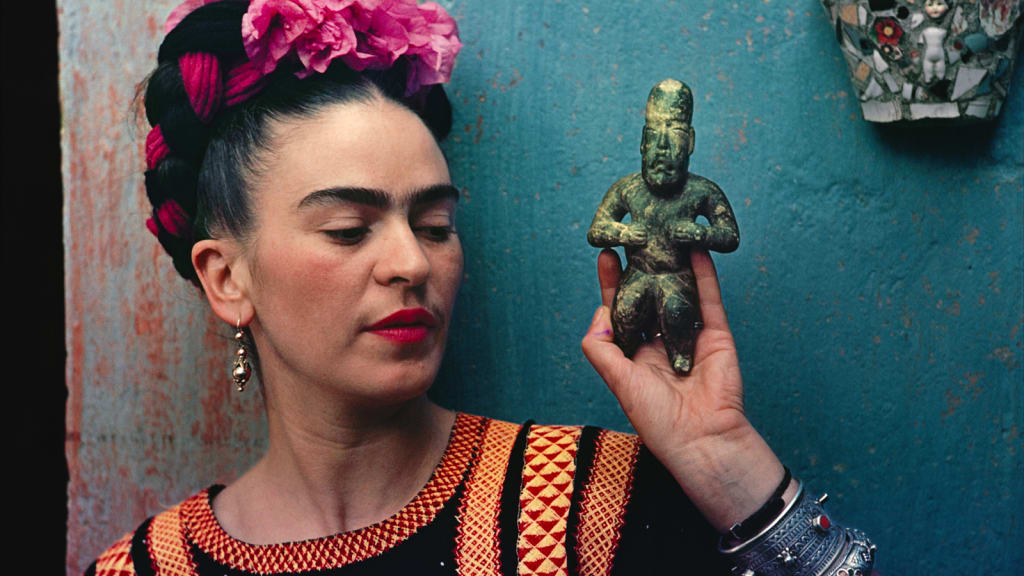Trigger Warning: Graphic description of personal injury
Frida Kahlo is known today as one of the twentieth century’s most influential painters. The transcendence of her art is a testament to its cultural significance and relevance in contemporary society. Kahlo’s immortalisation has moulded her into a public persona that’s often idolised and labelled an icon—whether it be feminist, queer, or Marxist. Nonetheless, pop-culture has commercialised Frida’s identity, compartmentalising her, dissecting her. Her art has been reduced to a singularity of meaning that can’t fully encapsulate the multiplicity of her complex psyche. Kahlo renounces signification as she verges on the margins of identity, never fully embracing one aspect of herself over the other. She is the definition of contradiction.
Kahlo’s battle with chronic pain featured heavily in most of her works. Art became a liberating tool, providing an escape from her pain, displacing it from her body onto the canvas. After surviving poliomyelitis as a child Kahlo’s right leg suffered from muscle atrophy, the length discrepancy between her legs leading to lifetime scoliosis. A trolley accident in her teen years intensified her health issues, leaving her with multiple bone fractures, crushing her right foot and dislocating her shoulders. She also endured permanent pelvis damage when an iron handrail impaled her pelvic floor. Throughout her adult life, Kahlo suffered numerous miscarriages and underwent many unsuccessful operations, finally having her right leg amputated in 1953, a year before her death.

The Broken Column (1944) is one of Kahlo’s most notable works, painted shortly after one of the artist’s spinal surgeries. The splintered landscape of the background echoes her fractured spine replaced by an Ionic column on the brink of collapse. The subject’s body becomes a battleground where modern medicine and ancient civilisation come face to face, not fully able to reconcile with each other. The metal corset captures Kahlo behind its bars and confines her body, prolonging her life but her pain, as well as the column, remains fundamentally fissured. The raw portrayal of her sexuality in conjunction with Christian imagery of martyrdom acts as a protestation, a refusal to be defined as either or. In rupturing her body through art, she builds herself back up and claims full ownership of her being, staring at us—the spectator— and forcing us to look inward and examine the roots our own discomfort. In what can only be called a revolutionary subversion, we become her subject and she the spectator. What’s also revolutionary is that for Frida the personal is the political and the emotional pervades the cultural. The painting is not merely an artistic expression of her physical predicament but also a commentary on broader political issues of cultural dispossession and imperialism.
Frida Kahlo was a radical—and not just in the political sense. She embraced who she was without pretending to like every aspect of herself. She lived unapologetically, experiencing every feeling to the fullest. She hated herself, she loved herself, she wanted to live, she wanted to die. She was human and never professed to be otherwise. In her words, “I am, simply I am”.
Maria Leontiou
Image credit: Nickolas Muray Photo Archives / CNN.com

